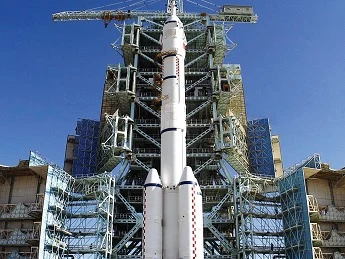Key Takeaways
1. The Long March 2D rocket successfully launched 12 “space computing” satellites on May 14, 2025, marking the 576th mission in the Long March series.
2. The satellites were arranged using a two-layer setup, with careful timing for their separation during launch to optimize performance.
3. The quick turnaround from contract signing to launch took only five months, highlighting efficient collaboration among engineers and satellite teams.
4. The satellites are part of the “Star Computing” program, designed to perform high-speed calculations and support a future network of 2,800 satellites.
5. Equipped with advanced communication links and an X-ray detector, the satellites enable real-time data analysis and aim to reduce emissions from traditional data centers on Earth.
The Long March 2D rocket took off from the Jiuquan Satellite Launch Center at 12:12 PM (Beijing time) on May 14, 2025. This mission successfully placed twelve “space computing” satellites into a sun-synchronous orbit, marking the 576th triumph for the Long March series.
Launch Details
For this mission, planners used a two-layer setup for the satellites: two main satellites were stacked vertically on the top, while ten additional ones were arranged in twin rings along the side. The payloads were released through four carefully timed separation events, and the flight path was optimized to reduce disturbances to the rocket’s upper stage.
Rapid Turnaround
The time from signing the contract to the actual launch was a quick five months. Engineers from the China Aerospace Science and Technology Corporation’s Eighth Academy worked closely with the satellite teams to finalize electromechanical connections and orbital details, speeding up the integration process. This showcased the liquid-propellant rocket’s capability to carry mixed payloads weighing up to 1.3 tons to a sun-synchronous orbit at 700 km.
Future of Space Computing
These twelve satellites are the first batch of the “Star Computing” program, also known as “Satellite Computing.” Guoxing (ADA) Space manufactured the buses, while Zhijiang Laboratory provided the main payload according to the “Three-Body Computing Constellation” specifications. Each satellite is capable of performing five peta-operations per second. The program’s managers have plans for a larger network of 2,800 satellites, which could potentially deliver around 1,000 POPS.
In addition to their powerful processing capabilities, the satellites are equipped with 100 Gbps laser communication links between them, as well as an X-ray detector from Guangxi University. This setup allows for real-time onboard data analysis and monitoring of astrophysical events like gamma-ray bursts. Ground collaborators, including SoftStone and Kepu Cloud, are establishing data centers that will connect with the satellite network, aiming to move energy-heavy tasks off the planet and decrease emissions from earthbound data centers.
Source:
Link


Leave a Reply